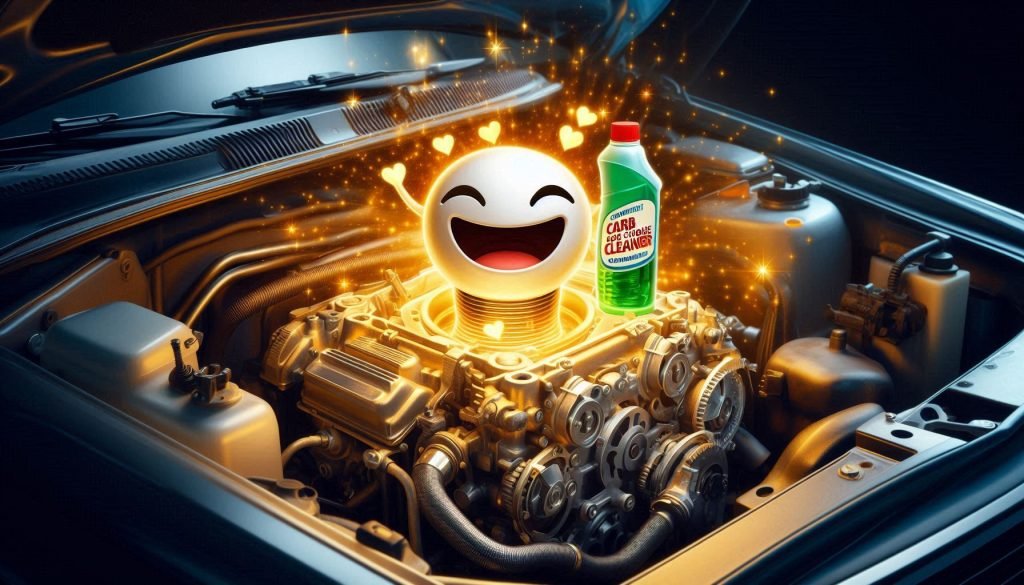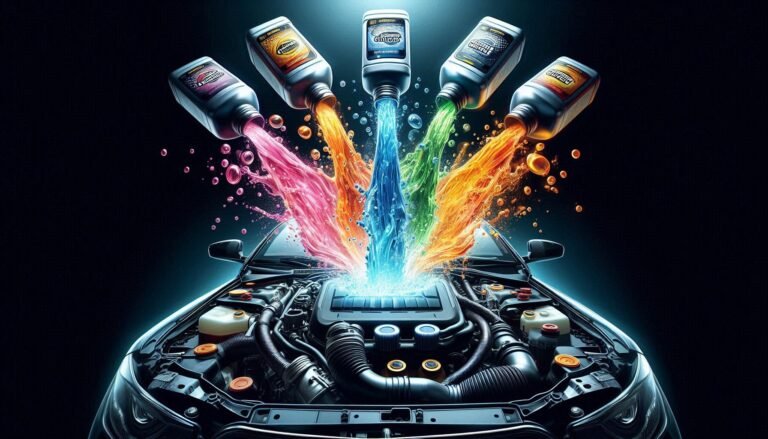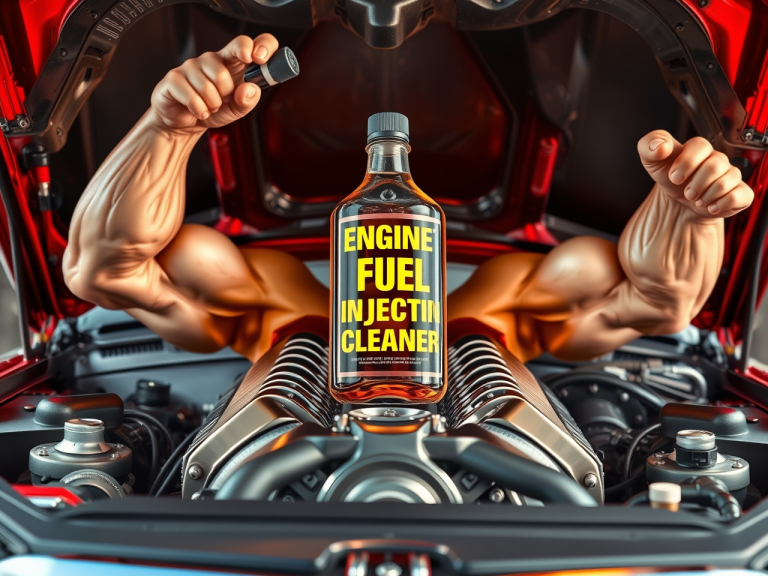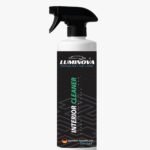Understanding Carb and Choke Cleaners: A Must-Have for Engine Maintenance
By Ali Hasan Omar | August 14, 2024

Introduction
Whether you own a vehicle or machinery with an internal combustion engine, you’ve likely come across terms like “carburetor” and “choke.” Proper maintenance of these components is essential for optimal engine performance. Carburetor and choke cleaners are indispensable tools to ensure your engine runs smoothly and efficiently.
What are Carburetor and Choke Cleaners?
Carburetor and Choke Cleaners are specially formulated solvents designed to remove harmful deposits like dirt, varnish, gum, and carbon buildup from the carburetor and choke. These cleaners come in aerosol form, allowing for easy and precise application.
Key Points:
- Carburetor: A vital component of the fuel system in many internal combustion engines, including those found in cars, motorcycles, small aircraft, and equipment like generators and lawn tools. Its main function is to mix fuel and air before sending the mixture to the engine for combustion.
- Choke: A device that regulates the air-fuel mixture during engine startup, especially in cold conditions. Chokes can be either manual (driver-controlled) or automatic (regulated by temperature sensors or vacuum mechanisms).
Why Are Carburetor and Choke Cleaners Important?
Over time, carburetors and chokes can become clogged with dirt and debris, reducing engine performance. If left untreated, these deposits can cause issues such as:
- Rough idling
- Difficulty Starting
- Reduced Power
- Stalling
- Poor Fuel Economy
Fortunately, carburetor and choke cleaners can solve these problems quickly, often without needing to remove the carburetor from the engine. By using these cleaners regularly, you can:
- Improve engine performance by maintaining smooth operation.
- Increase fuel efficiency by optimizing the air-fuel mixture.
- Prevent stalling, especially during cold starts.
- Extend engine life by minimizing wear and avoiding costly repairs.
- Reduce emissions by ensuring the carburetor functions correctly.
How to Use Carburetor and Choke Cleaner

Cleaning your carburetor and choke is straightforward but requires some knowledge of your engine’s components.
Step-by-Step Instructions:
- Preparation: Ensure the engine is off and cool to avoid fire hazards. Wear protective gloves and safety glasses.
- Access the Carburetor: Depending on the engine, you may need to remove the air filter and housing to access the carburetor and choke.
- Apply the Cleaner: With the engine off, spray the cleaner directly onto the carburetor throat and accessible parts. Some mechanics prefer to do this while the engine idles, but this method should only be attempted if you’re confident in handling it safely.
- Reassemble and Test: Allow the cleaner to dry before reassembling the parts. Start the engine and let it idle for a few minutes to check for smooth operation.
What Makes the Best Carburetor Cleaner?
A high-quality carburetor cleaner effectively removes dirt and grime without damaging the carburetor or other engine components. Here’s what to look for:
- Fast-acting: The best cleaners quickly dissolve and remove deposits, making cleaning easy.
- Safe for components: Choose a cleaner that is safe for carburetor materials such as rubber, plastic, and unpainted metal.
- Easy to apply: The ideal cleaner should come with a spray nozzle for easy and direct application.
Popular Carb and Choke Cleaner Products
Here are some top carburetor and choke cleaners available today:
- Berryman 0996 Chem-Dip Cleaner: A powerful solution for deep cleaning carburetor parts and removing stubborn buildup.
- STP Carb Spray Cleaner: Known for its heavy-duty formula that eliminates gum, grease, and grime, ideal for vehicles with carburetors, linkages, and throttle systems.
- COMMA Carb & Choke Cleaner: Versatile enough for use on both old and new vehicles, this cleaner is effective on other car components too.
- CRC Carb & Choke Cleaner: Safe for fuel-injected engines and perfect for cleaning throttle bodies and air intake systems.
How Often Should You Clean a Carburetor?
The frequency of carburetor cleaning depends on how often you use your vehicle, the driving conditions, and the type of fuel. As a rule of thumb, clean your carburetor once a year or every 12,000 to 15,000 miles (19,000 to 24,000 km). If you experience any of the earlier-mentioned symptoms, cleaning may be needed more frequently.
Tips for Choosing the Right Cleaner
- Compatibility: Ensure the cleaner is suitable for your engine type, whether it’s a small engine, motorcycle, or automobile.
- Strength: Use a heavy-duty cleaner for deeply soiled parts, while lighter formulas are suitable for routine maintenance.
- Safety: Consider non-flammable or low-VOC products, particularly if you are working in enclosed areas.
Summary
Keeping your carburetor clean is essential for optimal engine performance, improved fuel efficiency, and extended engine life. By regularly using a carburetor and choke cleaner, you can:
- Enjoy better performance
- Save on fuel costs
- Reduce the likelihood of expensive repairs
Whether you’re driving a classic car, riding a motorcycle, or using a lawnmower, maintaining a clean carburetor is a small task that delivers big rewards.
The accompanying video provides a detailed explanation of the concepts discussed in this article.
FAQs
What is a carb and choke cleaner used for?
A carb and choke cleaner is used to remove dirt, carbon deposits, varnish, and other debris from the carburetor and choke, helping to improve engine performance and fuel efficiency.
How often should I use a carb and choke cleaner?
It’s generally recommended to clean your carburetor and choke every few months or during routine maintenance, depending on the condition of your engine and driving habits.
Can carb and choke cleaners be used on all engines?
Most carb and choke cleaners are designed for use on gasoline engines with carburetors, but always check the product label for compatibility with your specific engine type.
Can I use carb and choke cleaner on a fuel-injected engine?
Some carb and choke cleaners are safe for use on fuel-injected engines, while others are not. Check the product specifications before use.
What are the signs that my carburetor needs cleaning?
Common signs include rough idling, engine stalling, hard starts, poor fuel economy, and sluggish acceleration.
Is carb and choke cleaner safe for oxygen sensors and catalytic converters?
Most modern carb and choke cleaners are formulated to be safe for oxygen sensors and catalytic converters, but it’s best to verify with the product instructions.
Can I clean my carburetor while the engine is running?
Yes, some mechanics recommend spraying carb and choke cleaner with the engine running at idle, but this should be done carefully, following all safety precautions.
How do I apply carb and choke cleaner properly?
First, turn off the engine and remove any parts blocking access to the carburetor. Spray the cleaner directly onto the carburetor throat and other accessible parts, allowing it to dissolve deposits before reassembling.
Is it safe to use carb and choke cleaner on plastic or rubber components?
Some carb and choke cleaners may damage plastic or rubber, so always check the label to ensure the product is safe for use on these materials.
Can carb and choke cleaner improve fuel efficiency?
Yes, a clean carburetor ensures the air-fuel mixture is optimal, which can lead to improved fuel efficiency and better engine performance.
How long does it take for carb and choke cleaner to work?
Carb and choke cleaner works almost instantly, breaking down deposits on contact. However, for a thorough cleaning, you may need to let it sit for a few minutes.
Can I use carb and choke cleaner as part of regular maintenance?
Yes, regularly using carb and choke cleaner can prevent buildup, reduce engine wear, and extend the life of your engine.







